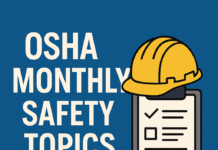
What is the OSHA Protection for Employees?
The Occupational Safety and Health Administration (OSHA) plays a crucial role in ensuring the safety and health of workers across various industries in the United States. OSHA protection for employees encompasses a range of regulations, rights, and responsibilities aimed at safeguarding workers from workplace hazards and ensuring they have a safe working environment.
1. Introduction to OSHA
OSHA, established in 1970 under the Occupational Safety and Health Act, is a federal agency tasked with setting and enforcing standards to ensure safe and healthy working conditions for employees. It operates under the U.S. Department of Labor and covers most private sector employers and their workers, as well as some public sector employers and workers in the 50 states and certain territories and jurisdictions under federal authority.
2. Understanding OSHA Protection
Definition of OSHA Protection
OSHA protection refers to the comprehensive framework of regulations, standards, and enforcement measures designed to protect employees from workplace hazards, illnesses, and injuries.
Purpose of OSHA Protection
The primary goal of OSHA protection is to prevent workplace injuries, illnesses, and fatalities by setting and enforcing standards, providing training, outreach, education, and assistance, and promoting continuous improvement in workplace safety and health.
3. OSHA Standards and Regulations
Overview of OSHA Standards
OSHA standards cover a wide range of workplace hazards, including but not limited to, chemical exposures, mechanical dangers, electrical hazards, and ergonomic issues. These standards are enforceable by law and are intended to establish minimum requirements for workplace safety and health.
Key Regulations Under OSHA
Some of the key OSHA regulations include those related to hazard communication, personal protective equipment (PPE), respiratory protection, fall protection, and machine guarding, among others.
4. Rights and Responsibilities of Employees
Employee Rights Under OSHA
Employees have several rights under OSHA, including the right to a safe workplace, the right to receive training on workplace hazards and how to prevent them, the right to report unsafe conditions to OSHA without fear of retaliation, and the right to participate in OSHA inspections.
Employee Responsibilities
Employees also have responsibilities under OSHA, such as following safety rules and regulations, using appropriate PPE, reporting workplace hazards to their employer, and cooperating with OSHA inspectors during inspections.
5. Safety Training and Education
Importance of Safety Training
Safety training is essential for preventing workplace injuries and illnesses. It helps employees recognize workplace hazards, understand their rights and responsibilities under OSHA, and learn how to protect themselves and their co-workers.
OSHA Training Requirements
OSHA requires employers to provide training to employees on specific safety and health topics relevant to their job duties. Training should be conducted in a language and vocabulary that employees can understand and should cover topics such as hazard recognition, PPE usage, emergency procedures, and workplace ergonomics.
6. OSHA Inspections and Enforcement
Process of OSHA Inspections
OSHA conducts inspections of workplaces to ensure compliance with safety and health standards. Inspections may be scheduled or unannounced and can be triggered by complaints from employees, reports of accidents or injuries, or referrals from other agencies.
Consequences of Violations
Violations of OSHA standards can result in penalties ranging from fines to criminal prosecution, depending on the severity of the violation and the employer’s history of compliance. Employers are required to correct cited violations within the specified timeframe and may be subject to follow-up inspections to ensure compliance.
7. Common OSHA Violations
Top Violations
Some of the most common OSHA violations include failure to provide fall protection, inadequate hazard communication, lack of respiratory protection, improper use of ladders, and violations of electrical standards.
Impact of Violations on Employees
Violations of OSHA standards can have serious consequences for employees, including injuries, illnesses, and even fatalities. It’s crucial for employers to take OSHA regulations seriously to protect the health and safety of their workforce.
8. Worker’s Compensation and OSHA
Connection Between OSHA and Worker’s Compensation
OSHA and worker’s compensation are interconnected systems aimed at protecting workers’ rights and providing compensation for workplace injuries and illnesses. While OSHA focuses on preventing workplace hazards, worker’s compensation provides financial assistance to employees who suffer work-related injuries or illnesses.
Benefits for Injured Workers
Worker’s compensation benefits may include medical treatment, rehabilitation services, lost wages, and compensation for permanent disabilities resulting from workplace injuries or illnesses.
9. Reporting Violations and Filing Complaints
How to Report Violations
Employees can report OSHA violations and file complaints with OSHA by contacting their local OSHA office or submitting a complaint online or by phone. Complaints can be made anonymously, and employees are protected from retaliation for reporting workplace hazards to OSHA.
Protection Against Retaliation
OSHA prohibits employers from retaliating against employees for exercising their rights under the law, such as reporting safety concerns or participating in OSHA inspections. Employees who experience retaliation can file a complaint with OSHA, and employers found guilty of retaliation may face fines and other penalties.
10. Employer Responsibilities
Providing a Safe Workplace
Employers are responsible for providing a safe and healthy workplace for their employees, free from recognized hazards that could cause serious harm or death. This includes complying with OSHA standards, conducting regular safety inspections, and providing training and education on workplace safety.
Compliance with OSHA Regulations
Employers must comply with all applicable OSHA regulations and standards relevant to their industry and workplace conditions. Failure to comply can result in citations, penalties, and legal consequences for employers.
11. OSHA Protection for Different Industries
Specific Regulations for Construction, Healthcare, etc.
OSHA regulations vary depending on the industry and type of work performed. For example, the construction industry has specific standards for fall protection, scaffolding, and excavation safety, while healthcare facilities must comply with regulations related to bloodborne pathogens, hazardous chemicals, and infection control.
12. Challenges and Criticisms of OSHA
Limitations of OSHA
Despite its efforts to promote workplace safety, OSHA faces challenges such as limited resources, evolving workplace hazards, and resistance from some employers to comply with regulations. Critics argue that OSHA standards are too burdensome or outdated and call for reforms to improve enforcement and protect workers more effectively.
Calls for Reform
Some advocates and policymakers have called for reforms to strengthen OSHA’s enforcement powers, increase penalties for violations, expand coverage to include more workers, and update standards to address emerging risks such as COVID-19 and workplace violence.
OSHA (Occupational Safety and Health Administration) provides various protections for employees in the workplace. These protections include:Safe Workplace: Employers are required to provide a workplace that is free from recognized hazards that could cause serious harm or death.
Training: Employers must train employees in a language and vocabulary they can understand about the hazards present in their workplace and how to protect themselves.
Safety Equipment: Employers must provide and maintain safety equipment, such as personal protective equipment (PPE), and ensure its proper use.
Record Keeping: Employers are required to keep records of work-related injuries and illnesses.
Whistleblower Protection: Employees have the right to report workplace hazards without fear of retaliation.
Inspections: OSHA conducts inspections of workplaces to ensure compliance with safety and health regulations.
These protections are designed to ensure the safety and well-being of workers across various industries.13. Conclusion
In conclusion, OSHA protection for employees is vital for ensuring workplace safety and preventing injuries, illnesses, and fatalities on the job. By setting and enforcing standards, providing training and education, and holding employers accountable for maintaining safe working conditions, OSHA plays a critical role in protecting the health and well-being of America’s workforce.
OSHA Exam Questions and Answers
List of OSHA Standards for Safety
14. FAQs on OSHA Protection
1. What does OSHA stand for?
OSHA stands for the Occupational Safety and Health Administration.
2. What rights do employees have under OSHA?
Employees have the right to a safe workplace, training on workplace hazards, the ability to report unsafe conditions to OSHA, and participation in OSHA inspections.
3. How can employees report OSHA violations?
Employees can report OSHA violations and file complaints with OSHA by contacting their local office, submitting a complaint online, or calling the OSHA hotline.
4. What are the consequences of OSHA violations for employers?
Employers who violate OSHA standards may face penalties ranging from fines to criminal prosecution, depending on the severity of the violation.
5. How does OSHA protect workers from retaliation?
OSHA prohibits employers from retaliating against employees for exercising their rights under the law, such as reporting safety concerns or participating in OSHA inspections.
























